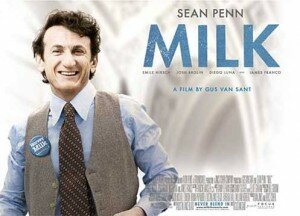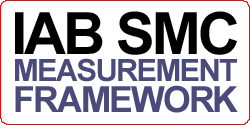, commercial director at Unruly Media explains what viral success looks like and how you measure it. Steve also talks about the vital characteristics your video needs to make it stand out and have the ‘shareable’ factor, using ‘Charlie bit my finger’ as an example.
Watch the below videos to see the interview in full…
By , head of digital strategy, Imagination
Browsing through research and social spaces as I like to do I came across this fascinating graph on TechCrunch last week.

It’s fascinating not because it shows a drop off in Facebook from December 2009 although that’s probably worth a column in itself, but because it shows the popularity of Stumbleupon. Stumbleupon has been helping users find random, rated content since 2001. It’s not new and it’s not flashy but it is very definitely a social space.
Users love stumbleupon for 3 reasons – peer-recommendation, simplicity and serendipity. Essentially they get great stuff from people they like in their network.
I’m not suggesting that Stumbleupon should be at the heart of every social media strategy, social media strategies should not be based purely on numbers but on relevance. Still, it reminded me again about the importance of considering your audience and being sure you know where they hang out online.
What this graph clearly illustrates is that the usual suspects are just that, usual. And it can pay to truly consider the whole social market place when you are investigating social media strategies. Or you might miss the most important place to be because it’s not the most high profile.
The IAB’s resident Paxman, , interviewed , commercial director at Unruly Media about what makes a successful viral campaign to dispel the myths that surround the area. Steve talks about what results clients are looking for from their campaigns using the Evian case study as a positive benchmark for brands, and what’s makes good creative.
Watch the below video to see the full interview…
by (vice SMC chair), Head of Buzz Metrics, nielsen
When something you don’t like reminds you of something you don’t like…
You know one thing I really don’t like? Sugar cubes. They really frustrate me. I mean, for something that is supposed to be so sweet and tasty, they are so annoying. Sugar cubes take forever to dissolve, and to speed up the process, I just keep stirring and stirring, making my drink cold. In addition, their form factor is supposed to be superior, but I don’t get it. I still have to use a spoon to take one and put it in my drink, just like granulated sugar. Also, there is no way to have a half a cube of sugar in my drink like there is with the other stuff. What is this post actually about, you ask? Well, I was at a meeting this week – stirring away – when I heard yet another major company talk about how they were ‘doing social media’ as they were ‘doing Facebook and Twitter.’ When I asked them why they were using these platforms, silence filled the room and puzzled expressions came across their faces.
You see, here is how many very well known companies seem to get involved in Social Media:
- First, an executive sees a presentation at an event, reads an article, or has a meeting with a consultant who talked about the Armageddon that is social media and the end of advertising models as we know them.
- This triggers a basic corporate reaction – the message flows downhill. This executive then turns to PR, Marketing, Brand, Research, etc. and tells them to put ‘Social Media’ on their list of objectives in 2010 and to go out and ‘do social media’.
- The final stage of this process includes the selected department determining that social media is Facebook and Twitter and therefore they launch a presence on these platforms.
Thus, when I ask them why they are doing this – i.e. what are their goals or objectives in using these platforms – they draw a blank. Social Media is a huge topic with so many activities, platforms, technologies, and aspects that it can overwhelm the most sophisticated and experienced business leader. The topic is so broad and vast, that trying to label or define it can become comical (just ask the IAB UK Social Media Council).
Rather than measure ‘social media,’ I believe companies should place much more emphasis on listening and using social media for strategy creation rather than jump right into execution or engagement. Listening and learning from this then can inform decisions to focus on destinations like Facebook and Twitter. Alternatively, companies and brands should look to define their objectives first, then determine if social media is a viable way to meet these objectives. For example, a brand may want to increase awareness, advocacy, retention, or churn, or decrease negative discussion and identify threats. A brand may want to begin to measure and treat each mention like an impression, something they are more familiar with measuring. Each of these components is much easier to breakdown into its individual parts and measure accurately and effectively. Otherwise, in my mind, social media measurement becomes as useful as a sugar cube.
At our first session for our Rising Voice in social media programme from RMM took the delegates through the 6 types of social media. Matt used a colourful party planner analogy with case studies and tips to do this.
Watch the below to see the full presentation…
Our first session of the Rising Voice in Social Media kicked off yesterday. , Associate Director – Social Media at Tamar (and hardcore Eva Longoria Parker fan) talked our delegates through how to get the most out of blogging and Twitter, with some case studies and best practice examples.
Simon Daglish vice president of Fox Interactive Media was interviewed by , senior PR and marketing manager at the Internet Advertising Bureau (IAB) about how to engage with your audience within social media and the importance of keeping them captivated. Simon was asked questions such as; whether it is better to engage the user instead of chasing the last click, do clients still require proof to use social media? and should measurement be bespoke per campaign? He also gave some useful advice for managing friends and fans in social networks.
Watch the below video to see the full interview…
By Tony Effik, chief strategy officer, Publicis Modem
 (Not necessarily the loudest!) Do you, like me, sometimes tire of all the noise in social media? As a group dedicated to the promotion of social media, we’re actually faced with quite a dilemma. Do we add to the hyperbole surrounding the discipline, while the substance suffers, or do we work together to contribute to a genuine future for social media? I think we’re all agreed on the latter.
(Not necessarily the loudest!) Do you, like me, sometimes tire of all the noise in social media? As a group dedicated to the promotion of social media, we’re actually faced with quite a dilemma. Do we add to the hyperbole surrounding the discipline, while the substance suffers, or do we work together to contribute to a genuine future for social media? I think we’re all agreed on the latter.
Which is why we’ve launched an initiative that’s purely dedicated to nurturing new talent – a practitioner programme for new starters, cutting through the hype and educating them about the realities of social media. You can book here to be a part of it, (unless places have been booked up already!)
As mentioned in my interview with the IAB previously, we have now set up the framework for the practitioner course, a first for the SMC council, starting on 19th April. The programme will cover key areas such as the definitions of social media, challenges of measurement, how to evaluate a campaign, measuring the importance of online engagement, brand and reputation management, social media display-planning and buying, legal regulations and privacy issues. The course will be spread over a series of five sessions all lasting 2 hours each, with a graduation (party!) on 12 August.
The main reason for creating this credential is because we believe as a council that it is vital to support young talent within social media in order for the business to mature and go from strength to strength. Our core objective in creating this course is to ‘turn the inexperienced into real experts within the social media space’ providing them with a clear perspective of what it’s really like to work within this side of the industry. Various IAB SMC members such as Tamar, RMM, We Are Social and have joined forces to produce a diverse curriculum for the delegates in order to achieve this.
Throughout the course the attendees will be expected to complete work outside the class room as well as blog about their learning process. Those delegates that complete the certificate will be awarded with a ‘Rising Voice in Social Media’ badge to showcase on their own blog once they have graduated.
The course is free for all IAB members and UK advertisers and spaces are going fast. Alternatively email to book your place!
By Amy Kean, senior PR and marketing manager, IAB. .
Sorry for the slightly inappropriate headline, but it’s based on , written in defense of the new fancy Uniqlo exercise, which appears to have received mixed reviews. Not from the general public, obviously (I doubt they care that much) but from us folks who work in digital, or more specifically social media.
In case you haven’t seen it, you enter your Twitter name into the snazzy red and white page and it provides you with a Tweet Show, displaying all your recent tweets and replies in time to a piece of rather odd music. , it’s nothing groundbreaking, but for what it’s worth having watched the show until the end I think it’s pretty and am more aware of Uniqlo and their new range of tshirts than before. I’m even thinking about buying one. What’s your view? Do you like it? Does there need to be an element of stickyness to keep you coming back? Does that even matter?

Read more…
By Amy Kean, senior PR and marketing manager, IAB.
 Yesterday we (the IAB) released the latest results from our biannual online adspend report with PwC, and it’s fantastic news.
Yesterday we (the IAB) released the latest results from our biannual online adspend report with PwC, and it’s fantastic news.
Numerous analysts predicted that the medium was set to experience a decline in revenues in 2009, with others believing it would remain static at best. In reality online adspend actually grew 4.2% throughout last year, topping just over £3.54 billion.
But what does this mean, I hear you cry? Well let’s refrain from comparing online with other media for a second, and instead look at it in the context of the wider UK economy. We’ve done our research, and it turns out that the online advertising market, at £3.5 billion, is the same size as the UK dairy industry.
IT’S THE SAME SIZE AS MILK AND CHEESE!
Even more interesting? It’s the same size as the UK commercial sandwich industry. So there you have it fact fans, online is also as essential to the economy as BLTs. (But not the side orders like salad, Kettle Chips, Branston Pickle etc.)
Whilst in other media outlets we talk about the breakdown of the different formats (search, classifieds and display) and what sectors are spending the most in online, my favourite stat from this report is a secret one that I’ve saved for this blog, and one that we chose not to include in the press release.
Much has been made about the growth of social networks and the significant part they play in the digital economy, but until now the IAB has never really had much data to back this up within the PwC study. However in 2009 we have been able to estimate that social networks and community sites in the UK now represent around 9.3% of all online display – an impressive figure, given that a few years ago, it probably would have been pretty non-existent! So there’s the proof, social media contributes significantly to online ad revenues, it’s growing, and no doubt we can look forward to it getting bigger and better next year.


 Yesterday we (the IAB) released the
Yesterday we (the IAB) released the 

